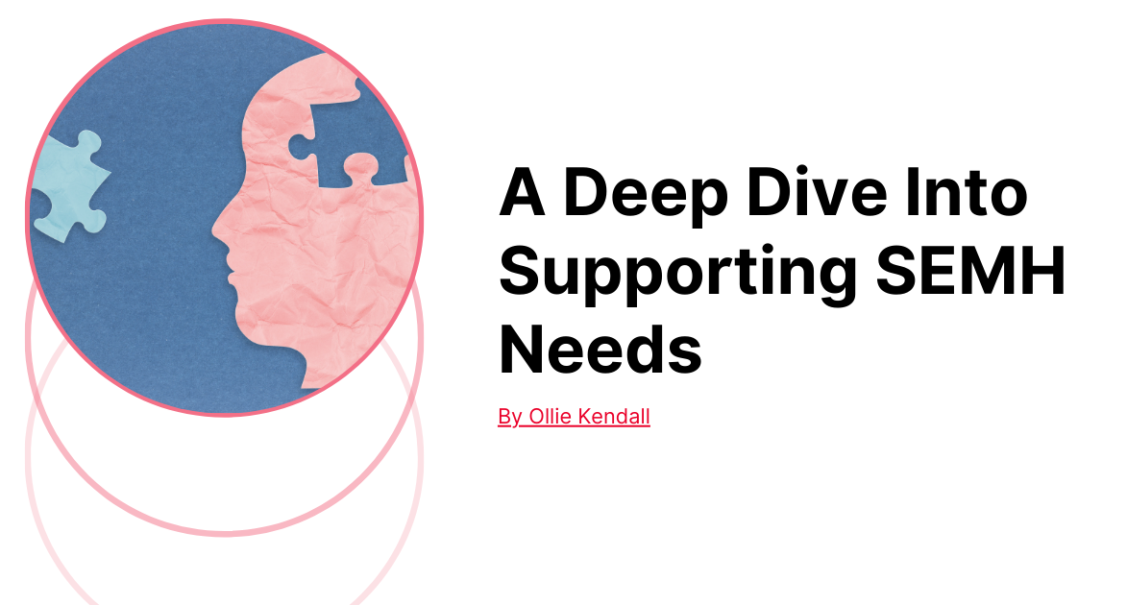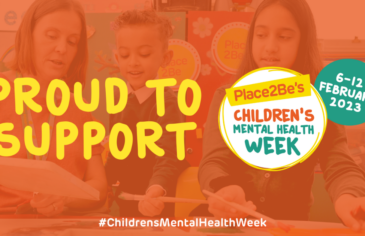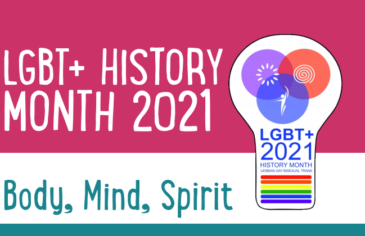A Deep Dive Into Supporting SEMH Needs
Ollie Kendall, Deputy Head Teacher at Red Balloon Worthing, gives us an in-depth look at supporting individual social, emotional, and mental health needs.
At Red Balloon, the mental health of our students is a priority, as we understand that achievement and wellbeing go ‘hand in hand’. Therefore, to promote positive mental health, students receive a ‘package’ of support and therapeutic approaches throughout their day at the Centre. Developing systems and approaches to meet individual SEMH needs in mainstream settings, which often differ significantly from a Red Balloon Centre, can be challenging. However, some of the ways to do so, based on my own experience of working in other settings, are discussed in this blog.
Upon joining a large mainstream school, it quickly became apparent that a minority of students with SEMH were not having their needs fully met – demonstrated by regular physical and verbal aggression towards their peers and staff. The school relied heavily upon behaviourist methods in their attempts to change habitual unsafe choices by these students, but unsurprisingly, this exacerbated the problem.
Theories on Behaviour
At this point, it is worth noting the various main theories on what drives behaviour, as schools that lack awareness of these might ‘fall foul’ to the notion that behaviourist approaches alone will improve behaviour.
The Behaviourist perspective is the belief that behaviour is strengthened if it leads to satisfaction (such as receiving a reward), or weakened if it leads to being ignored, or an unsatisfying experience (such as by receiving a punishment).
The Humanist perspective suggests that behaviour is driven by the necessity to belong to a social group; to think well of oneself; and for personal growth.
The Cognitive perspective identifies that behaviour is driven by individual cognitive processes, such as reasoning, understanding and interpretation of an event; hence different students respond differently to the same stimulus.
The Psychodynamic perspective suggests that a child’s behaviour results from their subconscious feelings, which are created from early life experiences. Problem behaviour is a result of inner child conflicts due to trauma, loss or a troubled relationship.
The Ecosystemic perspectivesuggests that behaviour is a result of social interaction, rather than from within the individual who displays it; misbehaviour is part of a cyclical chain of actions and reactions between participants.
More recently, another perspective on behaviour has been suggested, namely the ‘Bio-Psycho-Social model of SEBD’. This model incorporates some key elements from the various perspectives detailed above. It gives much-needed attention to biological factors (genetic inheritance and how the child’s brain develops); psychological aspects (emotional damage caused by abuse and or neglect); and social (attachment difficulties) level influences on behaviour.
Assessment of Individual Needs
With these theories in mind, an important initial step was the introduction of an assessment tool, to identify each child’s individual needs and the subsequent creation of personalised plans. The assessment covered Social, Psychological and Medical areas in accordance with the ‘Bio-Psycho-Social model of SEBD’. This was introduced to the teachers and importantly, this also meant that we now had a whole school referral and assessment system in place for students who may have SEMH difficulties. An example of this in practice related to a Year 6 student given the name Sarah as a pseudonym. She scored poorly on the social aspects suggesting that she: is not socially secure; lacks understanding of the feelings and attitudes of others; does not adapt flexibly or constructively with others; finds it difficult to express her own needs and accept and accommodate those of others.
Personalised Plans
We were now ready to use the initial assessments to create personalised plans for each student. For Sarah this was:
- Sarah had witnessed traumatic events; therefore, some of her behaviour could be driven by subconscious feelings created from her early life experiences (Psychodynamic perspective). It seems that she does not yet have the internal skills to understand and ‘solve’ such inner conflict. Sarah is to work with a Child Psychotherapeutic Counsellor for 2 hours per week.
- Some of Sarah’s behaviour is driven by her misperception of situations where she responds in a way appropriate to her, but not to others (Cognitive perspective). The Class Teacher will plan whole class Life Skills lessons around situations which she often misperceives (such as someone accidentally bumping into her in the corridor).
- It appears that Sarah did not develop a secure attachment, which has impinged her ability to form relationships. Moreover, her Mum has modelled undesirable behaviours (such as overreaction to minor events). Sarah will participate in Lego Therapy taught by the Learning Mentor in a group of 3. This will promote the development of her social skills; the sense of belonging to a group (Humanist perspective); and strengthen desired behaviours (Behaviourist perspective).
Improved Outcomes
As a result of these changes (introduction of a school counsellor, new interventions and targeted support), our ability to now meet the needs of this group were demonstrated in safer behaviour and improved attendance. This was echoed during a recent visit by Ofsted who judged ‘Personal development, behaviour and welfare as ‘Good’:
– “Records show that there have been no exclusions in the last three years. There are good systems in place to manage those pupils who need additional guidance.”
– “The attendance of disadvantaged pupils and those who have special educational needs or disabilities is improving rapidly. The few pupils who attend less well than others are well supported by the school, so that they are now attending more often than before.”
– “Those pupils who have struggled to succeed elsewhere are extremely well supported. There are excellent systems to nurture and care for vulnerable pupils with additional needs.”
You can find the un-edited PDF version of this article here.



